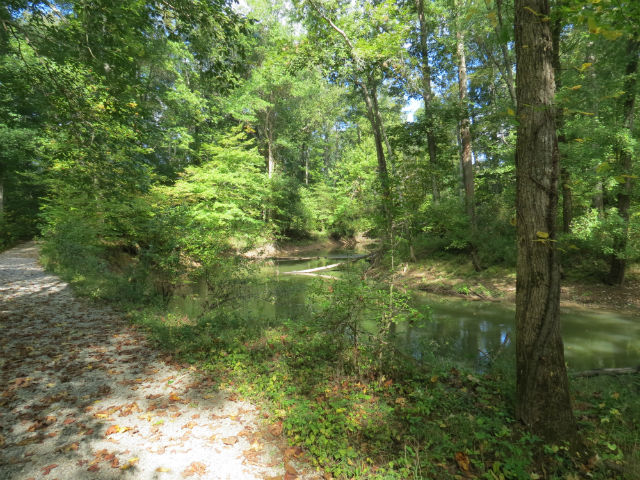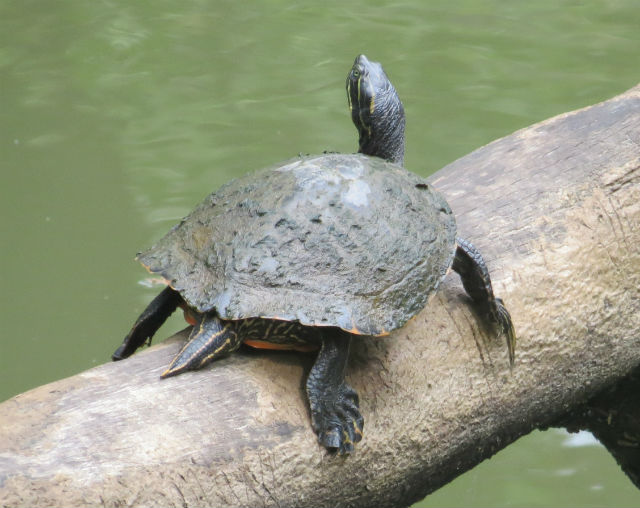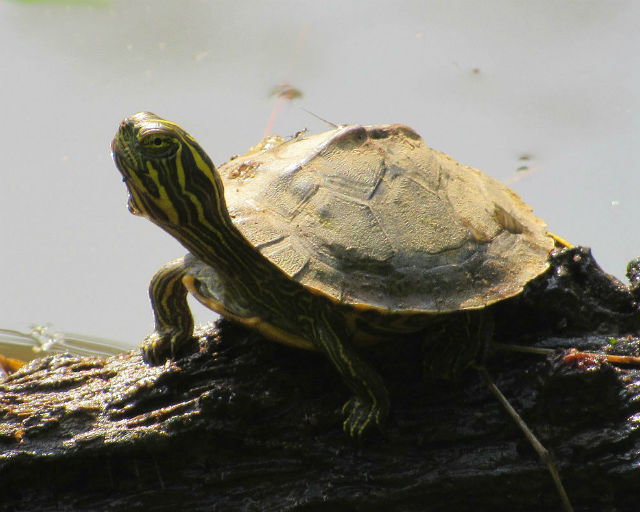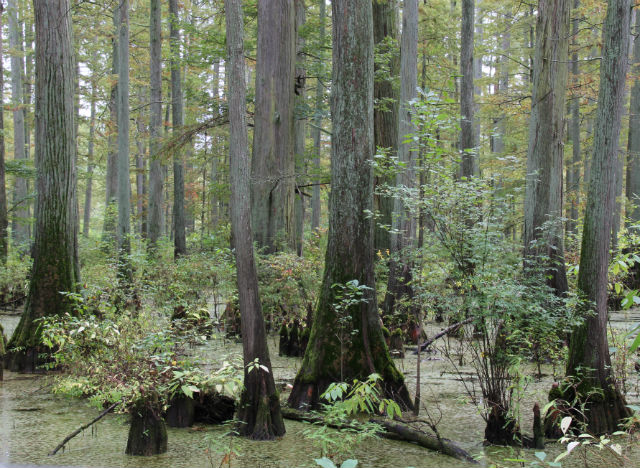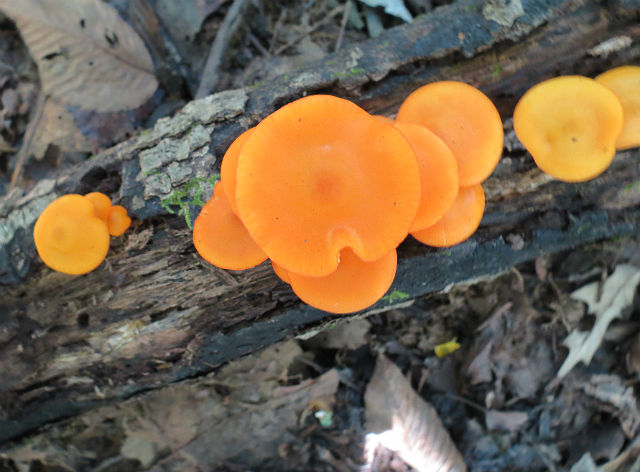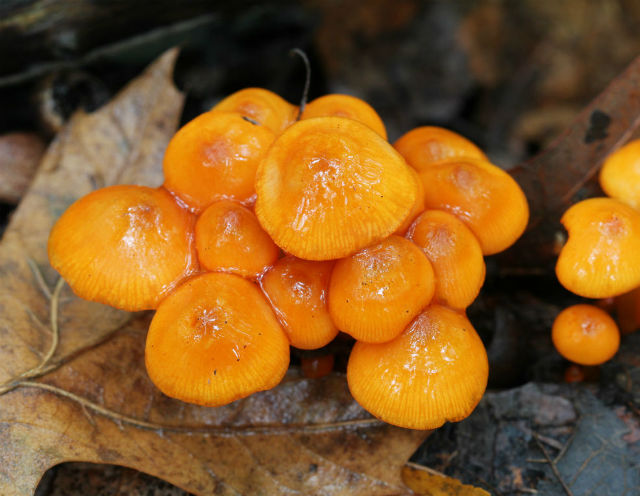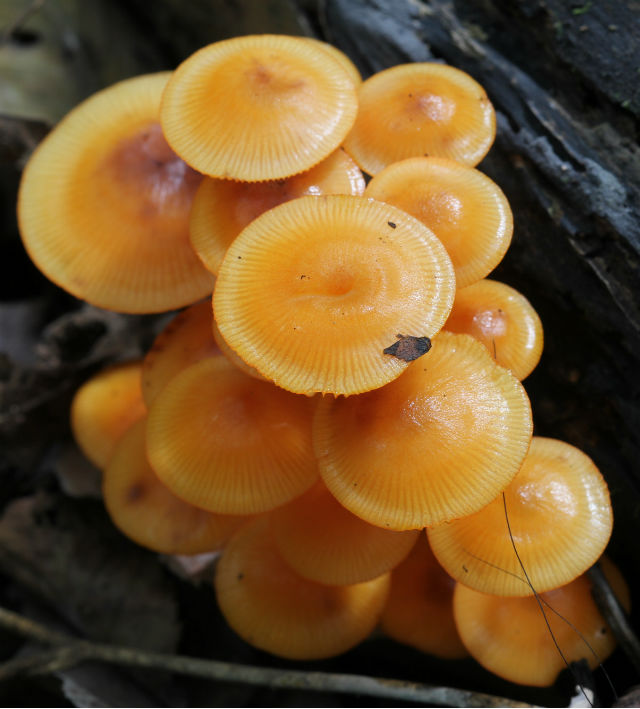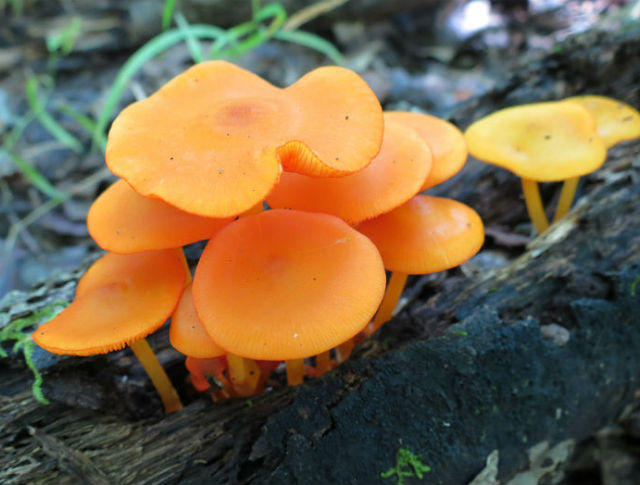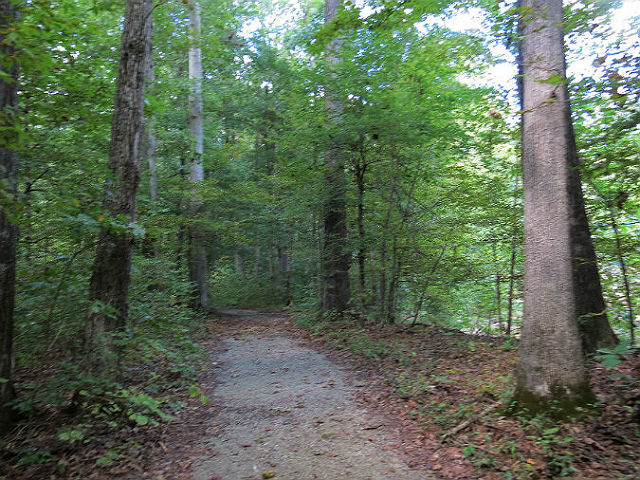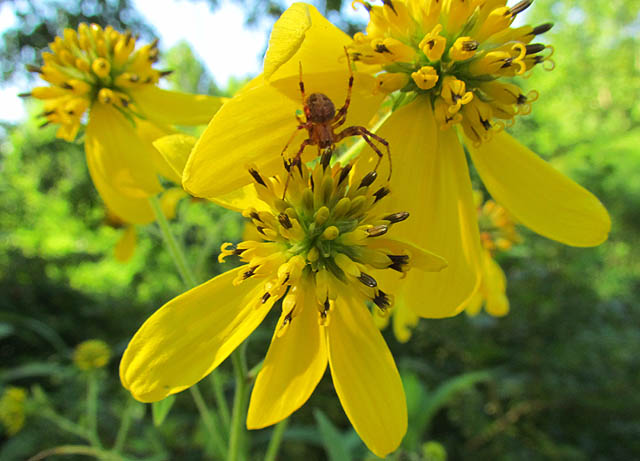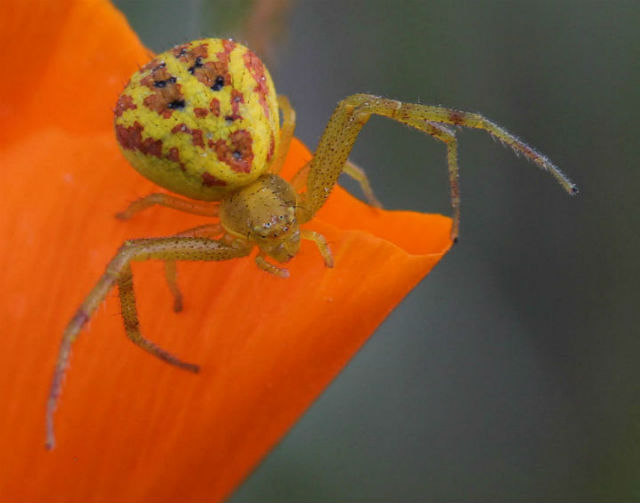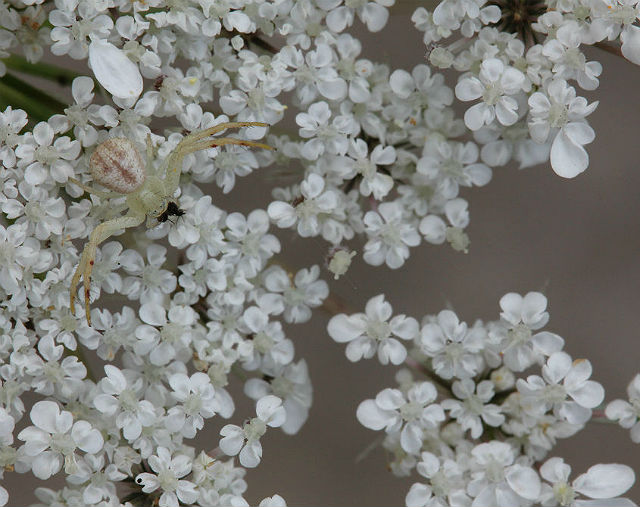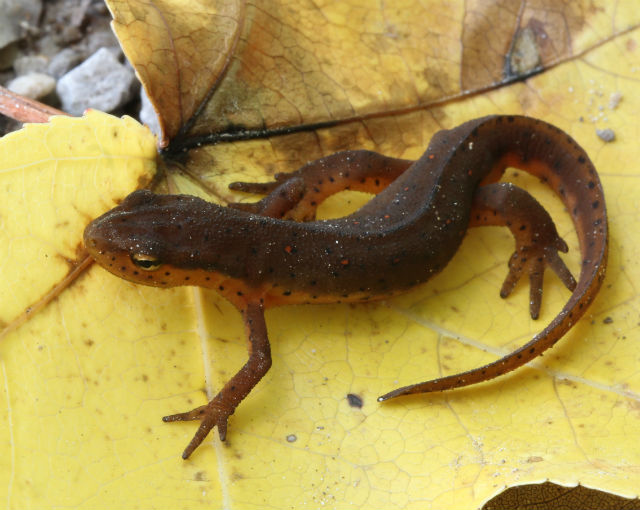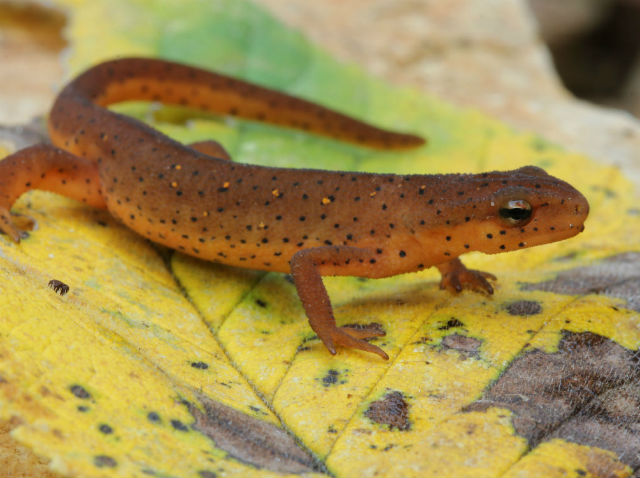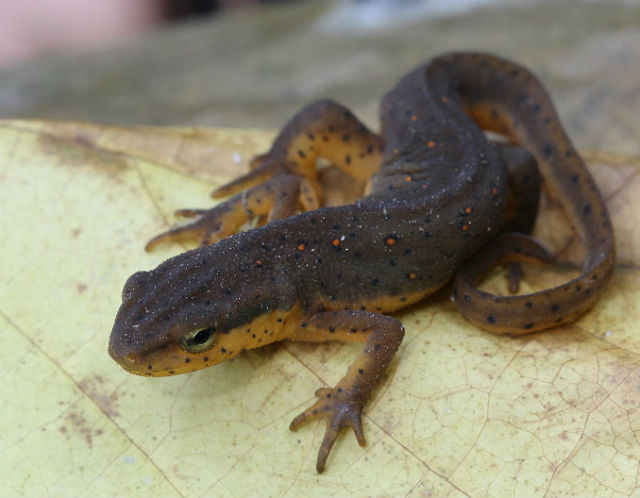Walking along the Cache River in southern Illinois, I spotted this “lifer” reptile basking on a log. It was a lucky find, as it is endangered in Illinois. This one was a male, as evidenced by its long claws on its front feet. The Eastern River Cooter resides in sloughs and rivers, especially where aquatic plants are abundant. Though aquatic, like other water turtles, it will leave the water to bask on logs.
They can grow to a shell length of around 12 inches. As part of their mating ritual, the male uses his long claws to flutter at the face of the much larger female. Like many other basking turtle species, they are very wary and quickly slide off their basking spot and into the water if approached. The term “cooter” may have come from the African word “kuta,” which means turtle.
Not long afterwards, while visiting Virginia, I saw this young example of an Eastern River Cooter. Aquatic plants seem to make up almost 95% of their diets. Like many other freshwater turtles, they have a sleek but protective shell. This allows them to withdraw when threatened, but still efficiently reduce water drag while swimming. It was neat to see this creature for the first time in the wild, both as an adult and a juvenile.

